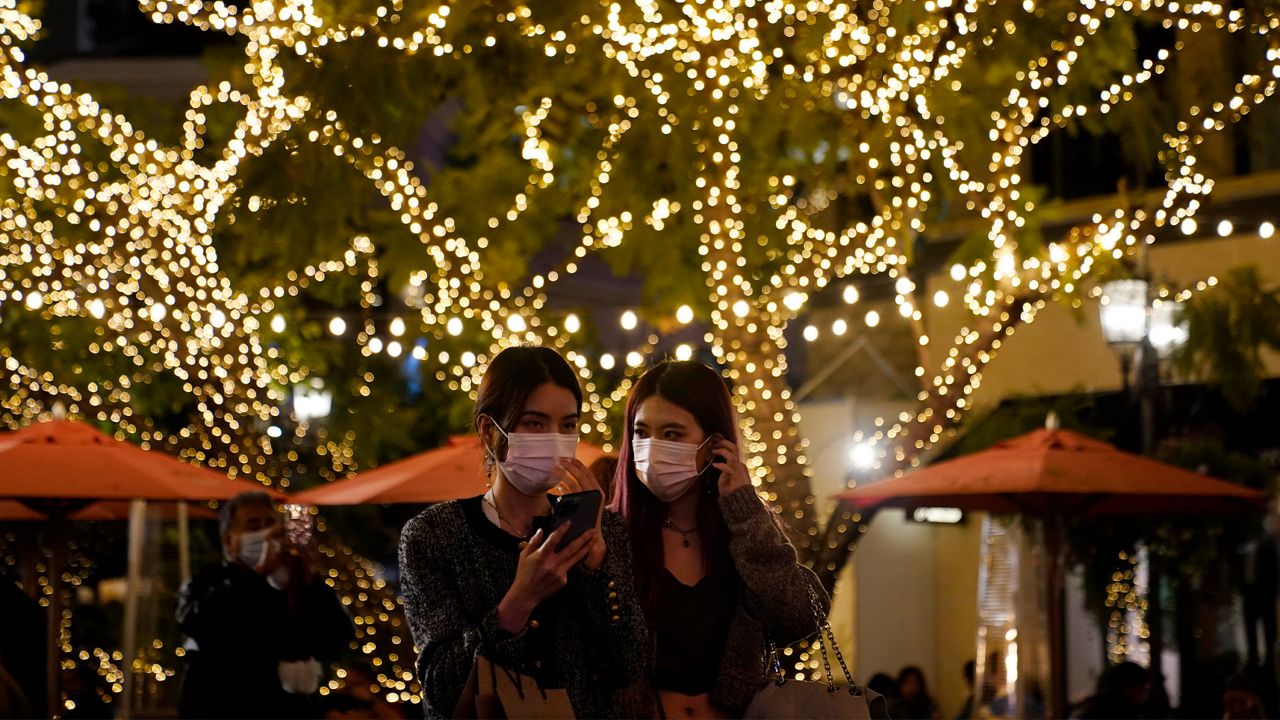LOS ANGELES — Los Angeles County reported more than 8,600 new COVID-19 cases Thursday, continuing a precipitous climb that the county's public health director warned could lead to record numbers of daily infections by the end of the year.
What You Need To Know
- Fueled by the highly transmissible omicron variant of COVID-19, Thursday's 8,633 new infections marked a 33% jump from Wednesday's 6,509
- Wednesday's number was more than double the total from Tuesday, when 3,052 cases were reported
- The county on Thursday reported another 24 COVID-related deaths, raising the cumulative total to 27,512
- The 8,633 new cases gave the county a pandemic total of 1,585,313
Fueled by the highly transmissible omicron variant of COVID-19, Thursday's 8,633 new infections marked a 33% jump from Wednesday's 6,509. Wednesday's number was more than double the total from Tuesday, when 3,052 cases were reported.
Public Health Director Barbara Ferrer warned Wednesday that if infections continue such a dramatic rise, the daily case number could top 20,000 by the end of the year, reaching the highest level of the pandemic.
Ferrer noted Wednesday that hospitalization numbers have thus far remained relatively stable, crediting COVID vaccines for preventing infected people from becoming seriously ill. But on Thursday, the number of COVID- positive patients in county hospitals rose to 801, topping 800 for the first time since early October, according to state figures. The 801 hospitalizations is up from 770 on Wednesday. Of those hospitalized, 174 were being treated in intensive care, up from 166 on Wednesday.
Ferrer said the vast majority of people being hospitalized due to the virus are unvaccinated, insisting that hospitalization numbers for vaccinated residents have remained low and flat since the shots became available. According to county figures, the hospitalization rate for unvaccinated people was 25 per 100,000 residents as of Wednesday, compared to just 1 per 100,000 for the vaccinated.
According to Ferrer, unvaccinated people are five times more likely to get infected with COVID, 21 times more likely to be hospitalized and 18 times more likely to die.
The county on Thursday reported another 24 COVID-related deaths, raising the cumulative total to 27,512. The 8,633 new cases gave the county a pandemic total of 1,585,313.
According to the county, the average daily rate of people testing positive for the virus rose to 6.6% as of Thursday, more than triple the rate from a week ago.
The surge in COVID infections is blamed primarily on rapid spread of the omicron variant, which was first discovered in South Africa and has quickly migrated around the globe, including all 50 U.S. states. Health officials have said there is no evidence omicron can cause more severe illness, but it can readily spread from person to person, including those who are vaccinated.
Ferrer said the benefit of vaccination is that it will prevent a COVID infection from causing severe illness or death.
As of Sunday, 78% of eligible county residents aged 5 and up have received at least one dose of vaccine, and 70% were fully vaccinated. Of the county's overall 10.3 million residents, 74% have received at least one dose, and 66% are fully vaccinated.
Black residents continue to have the lowest vaccination rate overall, at just 56% with at least one dose. Among Latino/a residents, the rate is 62%, compared to 75% of white residents and 84% of Asians.
Ferrer said the county is not immediately considering a return to lockdown or other severe restrictions on public activity, but it will depend on the actions residents take to slow spread of the virus.
"I've always been transparent and honest that with a variant such as omicron and potentially other variants that could happen in the future, every single option has to be on the table," she said. "Every single tool we have has to be available for us to protect people's lives and livelihood and ... avoid overwhelming the hospital system.
"... I think if we can all do this, all of us, every single person, commit to celebrating with as much safety as possible, which may mean you're changing up some of your plans, we're going to be OK," she said.



